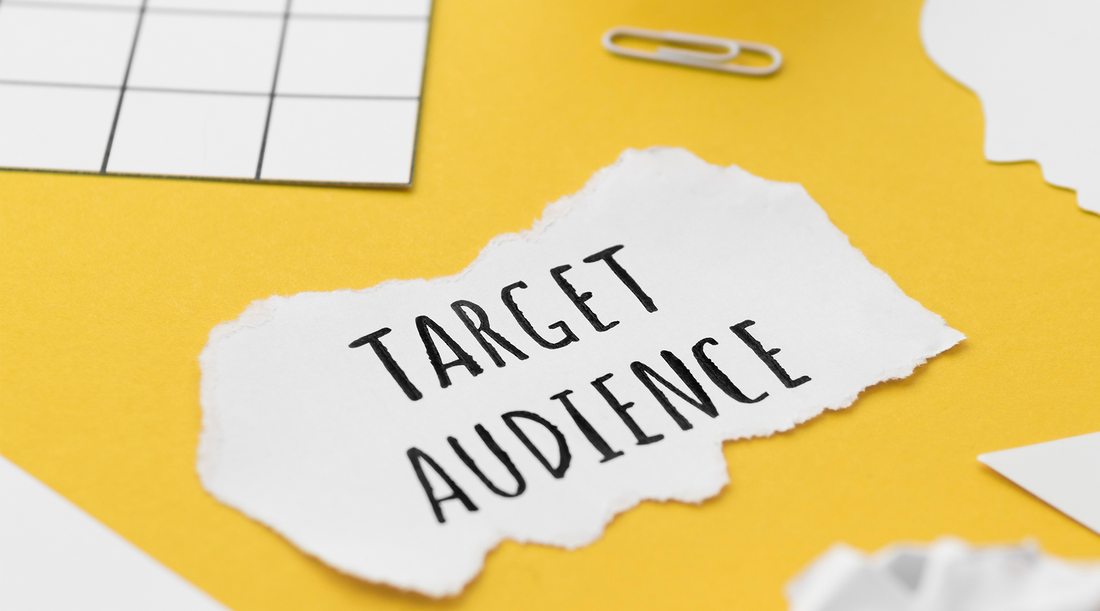A Guide to Target the Right Audience (Small Business)

Finding the target audience is important for every small business owner. That’s one of the key reasons behind the success or failure of any small business. Even if you can afford to target more people, still wasting your advertising amount isn't a good idea.
About $37 billion is wasted every year on ads that are unsuccessful in targeting the right audience.
One of the biggest mistakes a small business owner can make in the beginning is trying to appeal to everyone. Instead of wasting money on marketing strategies that appeal to everyone, you should identify your right audience.
Here we have a step-by-step guide on how to find your target audience. So, here we go:
You may also like:
How to Increase Brand Awareness for Small Business
9 Successful Holiday Marketing Ideas for eCommerce
5 Ways For Etsy Sellers To Get More Traffic
Learn about the types of target audiences that exist out there
A small business can define its prospects using characteristics. These are related to their preferences, purchase behaviors, and life experiences. A small business owner with a good grasp of their target audience classifies them based on these characteristics. The process is usually known as audience segmentation.
When it’s about finding the right audience to target, you can analyze your prospects through different categories. For example,
· Gender
· Career
· Age
· Interest
· Location
· Lifestyle, etc.
Learning different types of the target audience will let you identify the typical features of your audience to create campaigns they will be receptive to.
Take the time to analyze your products or services
Spare some time and review the services and products you are offering. Create a list of benefits and features of each product and service to do this in a well-structured way.
Have you gotten the detailed list in your hand? Now, you can focus on the audience whose needs your product or service can fulfill. Although you will still have a broader aspect of what your right audience will be. However, this practice will certainly let you keep going in the right direction.
Examine your customer base and narrow down your target audience
The right audience for your small business will depend on your products or services.
For example;
· If you are selling thermal label printer, your target audience would be small business owners, postal sectors, finance, manufacturing, etc. You can target the right audience by resolving their pain points. Such as, the MUNBYN thermal printer is efficient and doesn’t require ink or toner.
· On the other hand, if you are offering other business supplies too for businesses, such as sticker labels, wrapping paper, shipping labels, etc. Consequently, you'll have a broader audience to target.
Target audiences generally revolve around specific people your product or service can benefit from. Reaching these specific people is vital to improving your business's success.
While creating the first digital presence, a small business owner usually focuses on a broad audience. Later you can start to identify audience segmentation to create an ideal customer persona for your business. Besides gender, age, and income, you can also consider geographic segmentation. This practice is best if your small business is targeting a specific location.
Moreover, start considering the pain points your products or services are resolving. Understanding this particular point will help you to craft a better narrative about your potential audience.
Perform a competitive analysis
Every small business owner more often has a good idea about their competition. Analyzing your competition's target audience helps you determine if your products can appeal to them too.
· While specifying the right audience for your small business to target, it’s important not to be overwhelmed. Don’t try to spread your wings too wide.
· There is a high chance that your competitors are offering the same capacity products or services in the market.
So, have a look at what your potential competitors are targeting already. This practice will inspire you to target your right audience more effectively.
For example, if most of your competitors are creating Instagram ads. Then there is a high chance that your right audience is residing there. Moreover, understanding the current customers and who your competition is targeting can quickly give you insight into effective targeting opportunities.
This practice will also help you to learn about the niche your competitors are missing while targeting the audience. Consequently, you can easily and effectively fill the gaps in your target market.
Check data from your Google Analytics
Google Analytics is an effective tool that records data of your store or website visitors. The tool records your audience's gender, age, interests, etc. You can click on the Report option to access the information about your present site visitors.
· You can click on the Demographic tab to get the details about the engagement rate and conversion rate of demographics.
· Here you might see multiple people under one group visit. However, these aren’t always the most engaged with your small business.
So, have a look at the audience that’s consuming your site content in actuality and acting to it.
Utilize online communities and social media channels
According to research, about 68% of adults in the US use Facebook. More importantly, a third-quarter of these use this social media channel daily.
Similarly, your target audience resides on social media channels and online communities. So, you can’t afford to avoid these platforms while targeting the right audience for your small business.
These channels are also great for developing and engaging communities around your business. Once you have created a community, you can focus on educating your potential audience and foresting trust.
After a while, you will have a powerful opportunity to significantly increase your sales.
· These channels have billions of active users. If you’re new here, you first need to identify the best social media channels for your business.
· For this, you need to check the activity of your targeted audience.
· Starting with a social media channel with a large reach is always a safer bet. However, you must narrow down your search to reach the right audience.
Social media channels also offer you different ways to survey your target audience. Creating social media polls is the simplest and quickest way to do so. This practice will make it easier for you to listen and engage with what your audience says.
You can use the insights from social media polls to expand your business reach and target the right audience.
Important note:
Creating a social profile will also give your prospects a way to ask more about their concerns. This practice will further help you learn how to better help your audience grow your business.
Analyze your current customers
There are different questions that you can ask your current customers. These will help you understand the audience that’s more interested in your products or services.
The questions may include the following;
· Where do your current customers live?
· How old are they?
· What’s the gender of your audience primarily?
· What’s the average income of your current audience?
· What are their interest and profession?
· Is your business getting more clients from social media channels?
Your current customer analysis will help you target the right audience. Consequently, you can improve closing rates and reduce the time required to capture more sales.
Customer feedback is a powerful guide that helps you to get a deeper insight into your target customers. Learn ways to collect feedback here in this article.
Create your buyer persona
After performing all the steps mentioned above, you are all set to outline your right audience. You can create different buyer groups to dictate your marketing and sales efforts. Before promoting your small business, creating a buyer persona is better.
· Develop a well-detailed storyline around your buyer persona and define the motivations of your audience.
· Adding more details will make targeting and reaching the right audience easier.
That’s it for how to find your target audience. After completing this process, you can easily identify potential opportunities to create an effective game plan for your business.
Benefits to target your right audience.
As a small business owner, it’s vital to understand your target audience. This is important to define and execute more comprehensive and profitable marketing strategies for your business.
There are multiple reasons why you should find and target the right audience for your small business. These include:
· Knowing your right audience will make it easier to ensure your business reaches the right people.
Targeting the right audience is also important to improve your Return on Investment.
· Besides that, you can also better understand your target audience. This will consequently help you to develop a positive relationship with your audience.
· Moreover, you can also communicate better and more creatively with your prospects.
In today’s world, consumers prefer personalized ads from businesses, especially online.
In fact, about 80% of consumers they more likely to prefer a business offering personalized interactions.
Finding, understanding, and targeting the right audience is key to this.
Final Thoughts
Knowing and targeting your right audience makes it easier to promote and grow your small business. You can easily tailor your marketing plans and efforts to where most of your target audience resides. This will also keep you from wasting your time and efforts on a medium that won’t give profitable results.
Every small business needs to find the target audience to improve the ROI of its marketing efforts. So, learn how to find your target audience here.
Join Munbyn Community for more information.


